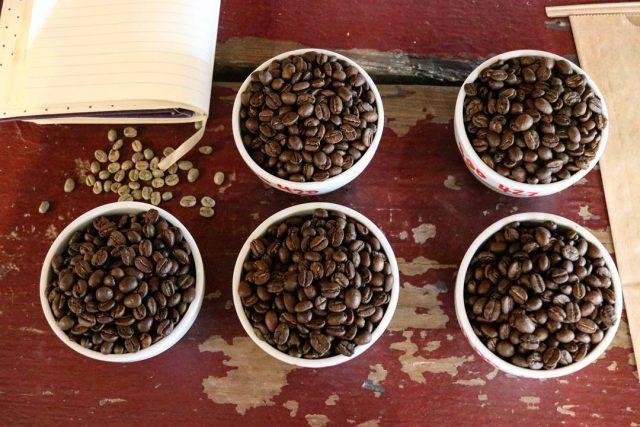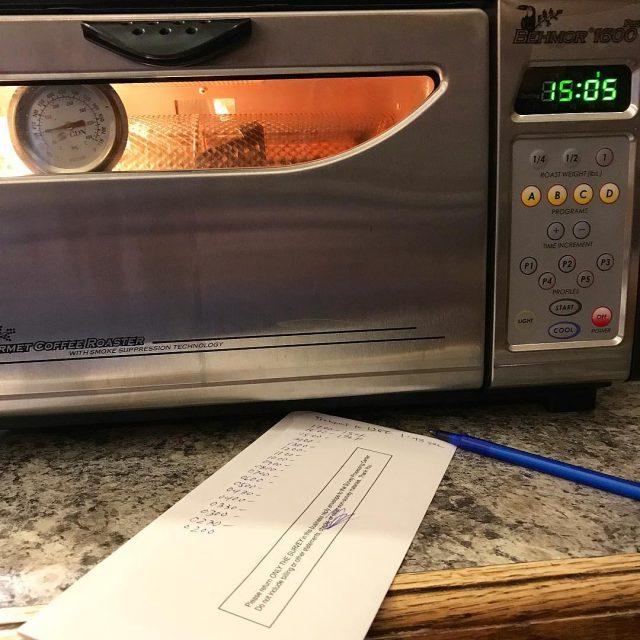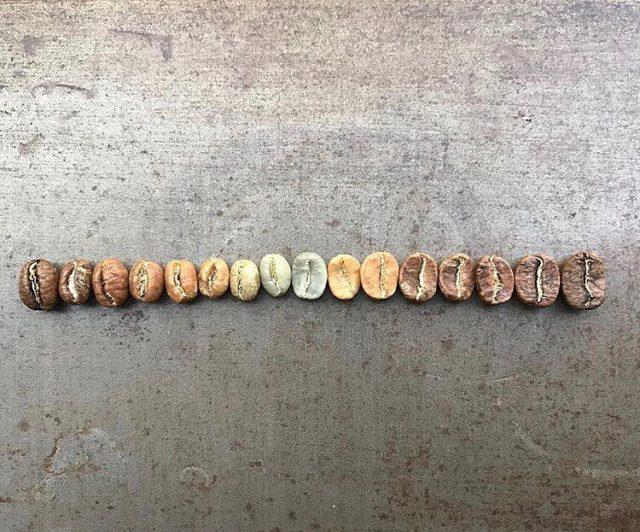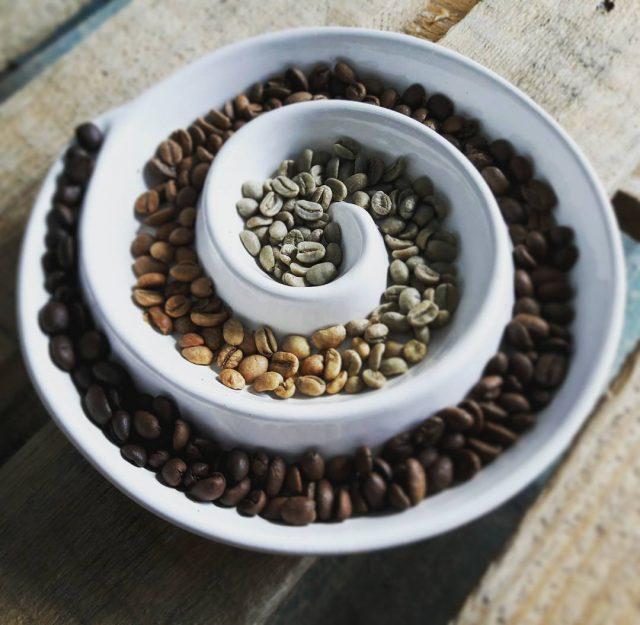Coffee roasting must learn the basic baking curve how to read the baking curve and make the baking curve at home.
For professional baristas, please follow the coffee workshop (Wechat official account cafe_style)
The basis of Coffee Baking: interpreting the Baking Curve
In the eyes of newcomers, all the baking curves seem to be the same, but when you really understand it, the baking curve becomes a valuable tool. Whether you are a professional or amateur bean baker, the baking curve makes your coffee beans taste better and more consistent, makes you more comfortable when experimenting with new baking strategies, and most importantly, it gives you a better understanding of coffee bean roasting.
Why use baking curves?
For the bean baker, the most frustrating thing is not being able to reproduce the delicious flavor of the coffee baked last month.
The flavor consistency of baked beans is the key point. Patrik Rolf, founder of April Coffee, told me that to do this, I need to record baking data, and the more the better.
"Flavor consistency can only be achieved according to your baking curve and using the same gas and throttle settings," he said. "the time and manner of reaching a certain temperature is as important as the temperature in the bean baker."
That's why we need to draw a detailed baking curve. Their function is that you constantly copy the reference for roasting coffee beans with the same flavor.
Sebastian Brauer, chief baker at Elbgold in Germany, also reminded me that "copying a baking curve is like learning more about coffee." Recording baked bean data not only allows you to replicate the flavor of a pot of beans, but also gives you a better understanding of coffee bean roasting. You can see how a variable affects the flavor curve of the final bean, such as temperature change, heating rate, and so on.
And when you want to test a baking theory, or try some of the baking techniques you read, you will have the data to compare the results.

How does an amateur baker who bakes beans at home draw a baking curve?
The baked bean curve is not just for professional bakers. Although professional equipment and software support can make it easier to draw the baked bean curve, anyone who wants to improve the baking technology can record and analyze the baked bean data.
Colin Hayes uses Behmor's 1600 Plus bean dryer, which provides the ability to read the coffee bean temperature, which is related to the ambient / air temperature-we will also talk about the characteristics of the ambient / air temperature in the baking curve. He told me that he would record the temperature of coffee beans every minute and compare them with previous roasting records of the same coffee bean. Placing a temperature reading device in a household bean dryer is another option.
Although recording the air temperature of baking and tabulating it is not as comprehensive as the professional baking curve, it allows you to adjust and control your coffee bean baking and copy the successful baking curve. Let's take a look at the significance of these curves.

How to read the baked bean curve?
Danny Hall is the developer of Roastmster, an APP app designed to record baked bean data. He classified the data of the baked bean curve into two kinds of curves: controllable curves and read-only curves. Controllable curves are variables that can be directly controlled in the process of baking beans, such as temperature setting, throttle size and gas size. Because these variables are constantly changing, the record is a continuous graph, so the reading curve is the reading temperature.
But what do you need to know when reading the baked bean curve? Patrik told me that the key data are the coffee bean temperature curve, the air / ambient temperature curve, and the heating rate curve-although you can also pursue a deeper interpretation by measuring coffee bean color changes, airflow, and gas pressure.

Coffee bean temperature
Neal Wilson, author of the open source baking data collection app Typica, said: "the temperature change in coffee beans in the bean baking machine is one of the data that people want to get. Because it not only gives us a deeper understanding of the chemical and physical changes that take place in coffee beans, but also contributes to the comparison between different times of coffee bean roasting, helping to diagnose problems with the consistency of baked beans in terms of quality and flavor. " He explained that by inserting a thermocouple into the coffee bean, you could read the temperature of the coffee bean.
The temperature of the coffee bean looks like a √, and once it starts climbing (the point at which it begins to rise is called the temperature recovery point), it should continue to rise. If not, the roasting of your coffee beans will be "stalling your coffee" and develop a bread flavor and a bland and tasteless flavor.
Heating rate
The heating rate curve is associated with the temperature of coffee beans, but there is a slight difference: it measures the rate of temperature change of coffee beans. You can read the predictions of temperature changes earlier, which in turn will give you better control over the roasting of coffee beans. The shape of the heating rate curve is very different from that of the coffee bean temperature curve, which increases sharply from 0 after the temperature recovery point.
Air temperature
This variable, which is recorded by Collin through the coffee bean temperature reading function of Behmor 1600 Plus, measures the ambient temperature in the boiler of the bean dryer. It is useful to measure this temperature because much of the heat transfer in the baking process is carried out through air. The curve of this variable is similar to the curve of coffee bean temperature.

The key stage in the baked bean curve
Now that we know the data measured in the baked bean curve, you can start reading and interpreting these curves. Before that, you need to pay attention to some key points in the chart, such as preheating temperature, tempering point, detonation and closing temperature.
Preheating temperature
This temperature is the temperature in the oven before you put in the coffee beans. By controlling the preheating temperature, you can accelerate or slow down the heating rate of the coffee beans, and accordingly, choose how much acidity to highlight. When choosing the preheating temperature, you should also pay attention to the density and handling of coffee beans.
Temperature recovery point
Because when you put raw coffee beans at room temperature in the toaster, the temperature in the dryer drops sharply and then begins to rise, and the point where the temperature begins to rise is called the temperature recovery point.
An explosion
The most famous moment in coffee bean roasting, an explosion means that the coffee beans are almost ready. As the coffee bean expands and the water evaporates, water vapor forms and accumulates in the coffee bean. Then the pressure formed by water vapor breaks through the coffee bean shell to form an explosion.
Closing temperature
As the name suggests, this is the temperature at the end of the baking.
By understanding what happens in the bean dryer at these key points, you can estimate their impact on coffee beans. For example, you can speed up or slow down your bean baking process by changing the preheating temperature.
One small thing: control of the entire roasting process of coffee beans is also very important. The formation of these key points is the general structure of coffee bean roasting, but they are linked together for analysis. Sebastian also told me, "all stages of coffee bean roasting are linked, but these key points, especially those like explosions, require special attention."

At first, baking beans can be a very challenging thing. There is a lot of data to be collected and understood. However, when you start baking beans and are exposed to air temperature, heating rate, explosion, etc., you will learn more and more about the secret of the development of coffee bean flavor during the baking process. So don't be intimidated by these charts-start recording the temperature and see how it can help your baked beans.
Important Notice :
前街咖啡 FrontStreet Coffee has moved to new addredd:
FrontStreet Coffee Address: 315,Donghua East Road,GuangZhou
Tel:020 38364473
- Prev

How is Starbucks decaf brewed? How do I order Starbucks decaf coffee?
Professional coffee knowledge exchange more coffee bean information please follow the origin and development of decaf coffee in coffee workshop (Wechat official account cafe_style): why are all Swiss water treatment decaf coffee sold? How is Starbucks decaf coffee made? Drink coffee, natural. It's best! Decaffeinated and decaffeinated are not recommended to drink Starbucks' decaffeinated prescription.
- Next

Starbucks decaffeinated coffee decaffeinated methods exposed! Caffeine content of decaf coffee
Professional coffee knowledge exchange more coffee bean information please follow the origin and development of decaf coffee in coffee workshop (Wechat official account cafe_style): why are all Swiss water treatment decaf coffee sold? Starbucks has two ways to remove caffeine: 1. Direct contact method: first soften the green beans in warm water, and then add a chemical [methanol chloride]. This
Related
- Beginners will see the "Coffee pull flower" guide!
- What is the difference between ice blog purified milk and ordinary milk coffee?
- Why is the Philippines the largest producer of crops in Liberia?
- For coffee extraction, should the fine powder be retained?
- How does extracted espresso fill pressed powder? How much strength does it take to press the powder?
- How to make jasmine cold extract coffee? Is the jasmine + latte good?
- Will this little toy really make the coffee taste better? How does Lily Drip affect coffee extraction?
- Will the action of slapping the filter cup also affect coffee extraction?
- What's the difference between powder-to-water ratio and powder-to-liquid ratio?
- What is the Ethiopian local species? What does it have to do with Heirloom native species?

